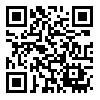شنبه 29 آذر 1404
[Archive]
جلد 11 -
جلد 11 - صفحات 500-495 |
برگشت به فهرست نسخه ها
Download citation:
BibTeX | RIS | EndNote | Medlars | ProCite | Reference Manager | RefWorks
Send citation to:



BibTeX | RIS | EndNote | Medlars | ProCite | Reference Manager | RefWorks
Send citation to:
Shahbazi F, Solgi M, Khazaei S. Predisposing risk factors for COVID-19 infection: A case-control study. Caspian J Intern Med 2020; 11 :495-500
URL: http://caspjim.com/article-1-2332-fa.html
URL: http://caspjim.com/article-1-2332-fa.html
Predisposing risk factors for COVID-19 infection: A case-control study. . 1399; 11 () :495-500
چکیده: (5777 مشاهده)
Background: The ongoing epidemics of coronavirus disease 2019 (COVID-19) have caused serious concerns in terms of public health. Literature that focuses on the risk factors of this issue is limited especially in developing countries. This study aimed to determine the predictors of COVID-19 infection in the west region of Iran.
Methods: This case-control study was conducted from February to April 2020 in Nahavand county, western Iran. Cases were all patients were positive for coronavirus and, the controls included people who had clinical signs consistent with COVID-19, but their test results were negative. Two controls were selected for every case. Multivariate logistic regression was used to estimate the effects of epidemiological characteristics on the incidence of COVID-19.
Results: Significant risk factors for COVID-19 infection based on the multivariable logistic regression model were male gender (OR = 1.82, p = 0.0.15), age group over 60 years (OR = 2.04, p = 0.017), living in urban areas (OR = 1.79, p = 0 .018), being married (OR = 2.08, p = 0.022), having history of contact with the corona patients (OR = 5.61, p = 0.009), and comorbidities (OR = 1.78, p = 0.031).
Conclusions: This study highlighted factors associated with the occurrence of COVID-19 infection. These findings may help to guide recommendations for the protection of high-risk groups.
Methods: This case-control study was conducted from February to April 2020 in Nahavand county, western Iran. Cases were all patients were positive for coronavirus and, the controls included people who had clinical signs consistent with COVID-19, but their test results were negative. Two controls were selected for every case. Multivariate logistic regression was used to estimate the effects of epidemiological characteristics on the incidence of COVID-19.
Results: Significant risk factors for COVID-19 infection based on the multivariable logistic regression model were male gender (OR = 1.82, p = 0.0.15), age group over 60 years (OR = 2.04, p = 0.017), living in urban areas (OR = 1.79, p = 0 .018), being married (OR = 2.08, p = 0.022), having history of contact with the corona patients (OR = 5.61, p = 0.009), and comorbidities (OR = 1.78, p = 0.031).
Conclusions: This study highlighted factors associated with the occurrence of COVID-19 infection. These findings may help to guide recommendations for the protection of high-risk groups.
نوع مطالعه: Original Article |
موضوع مقاله:
Health
دریافت: 1399/3/1 | پذیرش: 1399/5/21 | انتشار: 1399/7/28
دریافت: 1399/3/1 | پذیرش: 1399/5/21 | انتشار: 1399/7/28
| بازنشر اطلاعات | |
 |
این مقاله تحت شرایط Creative Commons Attribution-NonCommercial 4.0 International License قابل بازنشر است. |




